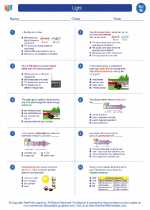Grassland
A grassland is a large, open area of grasses, with few trees and shrubs. They are found on every continent except Antarctica and are known by different names in different regions, such as prairies in North America, steppes in Asia, and savannas in Africa. Grasslands are characterized by their wide open spaces and diverse plant and animal life.
Key Features of Grasslands:
- Grasses dominate the landscape, with few trees and shrubs.
- Grasslands experience distinct seasons, with hot summers and cold winters.
- They are home to a diverse range of wildlife, including large herbivores like bison, zebras, and antelope.
- Grasslands are important for agriculture and grazing by domestic livestock.
Study Guide:
1. What are the main types of grasslands?
Grasslands are known by different names in different regions, such as prairies in North America, steppes in Asia, and savannas in Africa. These names reflect the specific characteristics and ecosystems of each type of grassland.
2. What types of wildlife are commonly found in grasslands?
Grasslands are home to a diverse range of wildlife, including large herbivores like bison, zebras, antelope, and smaller animals like prairie dogs, ground squirrels, and various bird species. These animals have adapted to the wide open spaces and abundance of grasses in the grassland ecosystem.
3. How are grasslands important for human activities?
Grasslands are important for agriculture and grazing by domestic livestock. They provide valuable land for growing crops and raising animals for food and other agricultural products. Additionally, grasslands play a key role in the environment and the carbon cycle, as the grasses help absorb carbon dioxide from the atmosphere.
.







